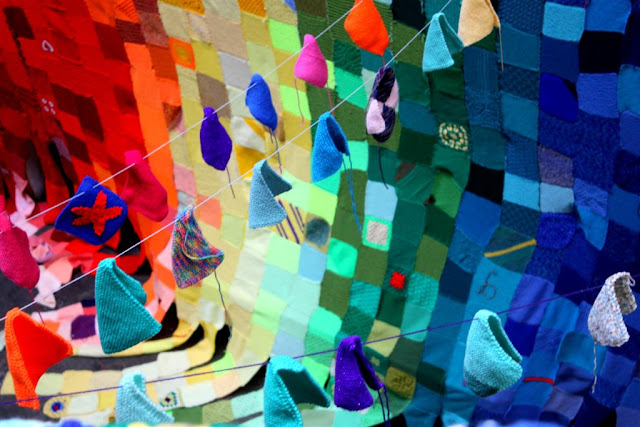
This is a sponsored post for which I receive money. However, it is a cause very close to my heart and I'm delighted to be able to support the Co-operative Group on this little blog of mine.
In 1844, the Rochdale Pioneers established the first successful co-operative and with it started a revolution which is still going strong. The Co-operative Group today has six million members and 5,000 outlets across its family of businesses. Every customer has the the opportunity to be a part of the Co-operative Group in a small way, and the group demonstrates its strong ethical credentials by providing funding for local projects that benefit the community, inspire young people, combat climate change or tackle global poverty - all areas that I strongly support.
A little while ago I introduced the funding opportunities for local projects that the Co-operative can support. Today I'd like to share some inspiring examples of the work that the group have funded, to support their launch of a high profile advertising campaign. The exciting bit is that anyone with a great idea can make it happen with the backing of an ethically sound movement, so what are you waiting for?
One such example of a local initiative funded by the Co-operative Group is Urban Bees. It was set up by bee-lovers Brian McCallum and Alison Benjamin. They wanted to help protect dwindling honeybee populations in urban areas by educating city-dwellers in beekeeping. Having already invested £500,000 into Plan Bee, the Group's own bee protection and education programme, funding from The Co-operative helped Urban Bees to run training courses for beginners, give talks and work in partnership with other organisations and companies.
Brian and Alison have now established 20 new hives on rooftops and in community gardens and allotments across London, and they will have given training and start-up equipment to approximately 300 people by the end of 2011.
In a time where the bee populations are declining, such an initiative is very welcome, and it also enables urban dwellers to source local honey.
Another fabulous project the Co-operative supported is the UK’s first community owned wind farm, Baywind Energy Co-operative which was established in 1996. The project has always favoured local investors, that way the economic benefits of the wind farm are kept within the community it serves, which in general is rarely the case, so it's an exemplary initiative.
In 1998 Baywind secured a loan from The Co-operative Bank to purchase two turbines for their Harlock Hill site. It has also received several grants from The Co-operative Enterprise Hub to develop new, co-operatively owned wind farms across the UK.
Baywind now typically generates around 10,000MWh of electricity each year – enough to power around 30,000 homes. And along with educational visits throughout the year, it funds environmental books for local schools.
And let me introduce a third example, because again, I think it's a great idea on so many levels, serving the people involved and the community, as well as having a sustainable transport agenda: The Oxford Cycle Workshop is a community-owned enterprise that sells recycled bicycles. It took advantage of the free business advice and support offered by The Co-operative Enterprise Hub to expand its service to local people. The Enterprise Hub connected the Workshop’s founders with the right people to advise them on how to move forward as a business, and to achieve their long-term goals. Now they have established a training centre that hosts cycle skills events and tailored maintenance programmes. They also hold workshops in community centres, and work with schools and organisations like the Youth Offending Service. All with the central aim of making cycling accessible for everyone in Oxford.
A similar project actually exists in Glasgow, Common Wheel, where a cycling workshop recycles and sells bikes, but also offers people suffering from mental health issues an opportunity to work, learn new skills and enter the workplace in a supported way.
I found these initiatives quite inspiring and I'm keen to find out if there are any projects local to me that the Co-operative Group supports, so I've liked their facebook page to stay in touch. I can think of many ways how co-operatives could work in my local area - for example I'm part of a co-operative vegetable box scheme, where a number of people have signed up for their organic vegetable box from the same farm. The veg is delivered centrally thus saving on food miles and us a few pounds because we get it cheaper. It is quite informally arranged, but it still needs some financial support to run and expand, for instance to include other locally and organically sources produce.
I'm always quite keen on skill share initiatives which would bring people locally together and enable them to exchange skills they have or buy in tuition in those skills they don't yet have locally, thus making communities more resilient and stronger. Even something like an outdoor playgroup could benefit from joining the Co-operative Revolution: with a bit of financial backing there is a lot of potential to make such playgroups accessible to more children. Do you have ideas that you would like to see implemented in your local area? Please do share, and do have a look to see if the Co-operative Group could lend a helping hand and contribute to making it happen.
You can stay in touch and Get involved with The Co-operative through their Facebook page and their Join the Revolution page.
Sponsored Post



























